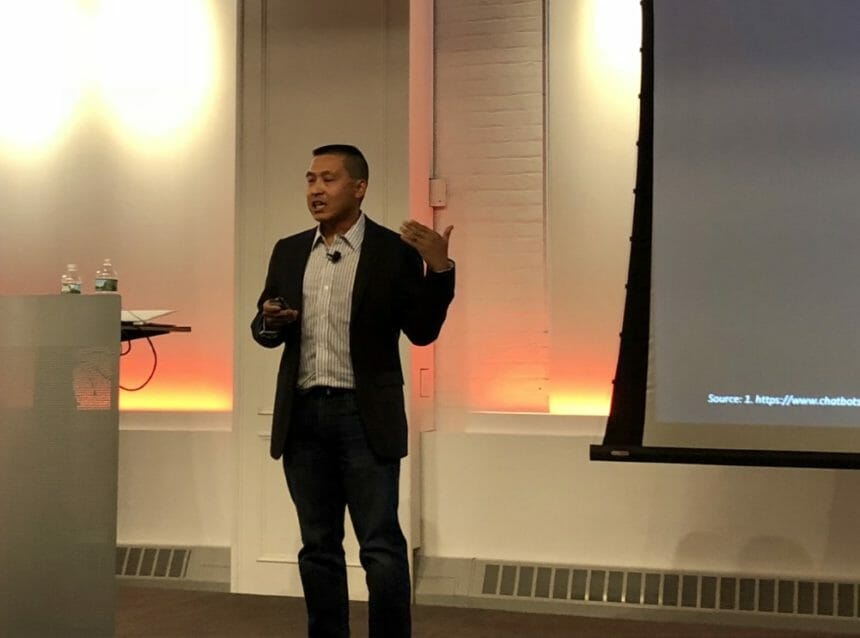Artificial intelligence, natural language processing, chatbots. The average marketer might associate these with startups and tech giants instead of healthcare companies.
However, healthcare and bots may have more in common than you think. Shwen Gwee, GM of Novartis’ digital accelerator, said many frameworks already used in healthcare, like decision trees for diagnosis and triage, can be easily shifted to automated systems like AI and chatbots.
Gwee, speaking at Ogilvy’s HealthBot conference in New York on Wednesday, said similar decision trees, where responses are ruled out based on user input, are behind many chatbots. A shift to automated bots could even relieve pressure on a healthcare system in which there are too few doctors.
Doctors sometimes work like algorithms to diagnose patients, Gwee noted, ruling out conditions based on symptoms and test results. In some ways, bots could be better than human doctors, who suffer from memory loss.
“Health bots and chat bots, through AI and machine learning, start to recognize patterns,” Gwee said. “If you build a health bot and add a machine-learning layer, it becomes a really smart doctor. With bots, the more data they have and more patterns they can recognize, the better they are.”
Chatbots can also be integrated into drug launches, Gwee added. Because they run on pre-structured conversations, content can be written before the launch date and sent for FDA approval like other promotional material. Chatbots could easily fit into the already-established pre-launch workflow at pharma companies.
Like decision trees, it “is just a matter of changing it to different platform,” Gwee said.
Research firm Gartner has predicted that bots will handle 85% of customer service issues by 2020, and healthcare research firm DRG has found that 40% of customers don’t care whether they interact with a human or a bot, as long as they get accurate information, he added. Gwee, who is trying to push the pharmaceutical industry to use technology like chatbots, said both statistics are encouraging.
Gwee also noted that many health chatbots are focused on mental health, because their formats lend themselves to a private, therapy-like conversation, but companies are trying to expand their use. Health systems are also using bots to keep tabs on patients after discharge, check on patients with chronic disease, and track clinical trial participants.
“Chatbots can help brands have those conversations with patients and stakeholders in a personalized, bite-sized, memorable way,” Gwee said. “It’s continuous, it’s asynchronous, its both push and pull, it’s free of judgment and stigma, and it leverages the power of visual education when its on a chat.”







